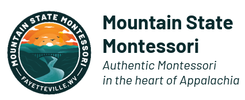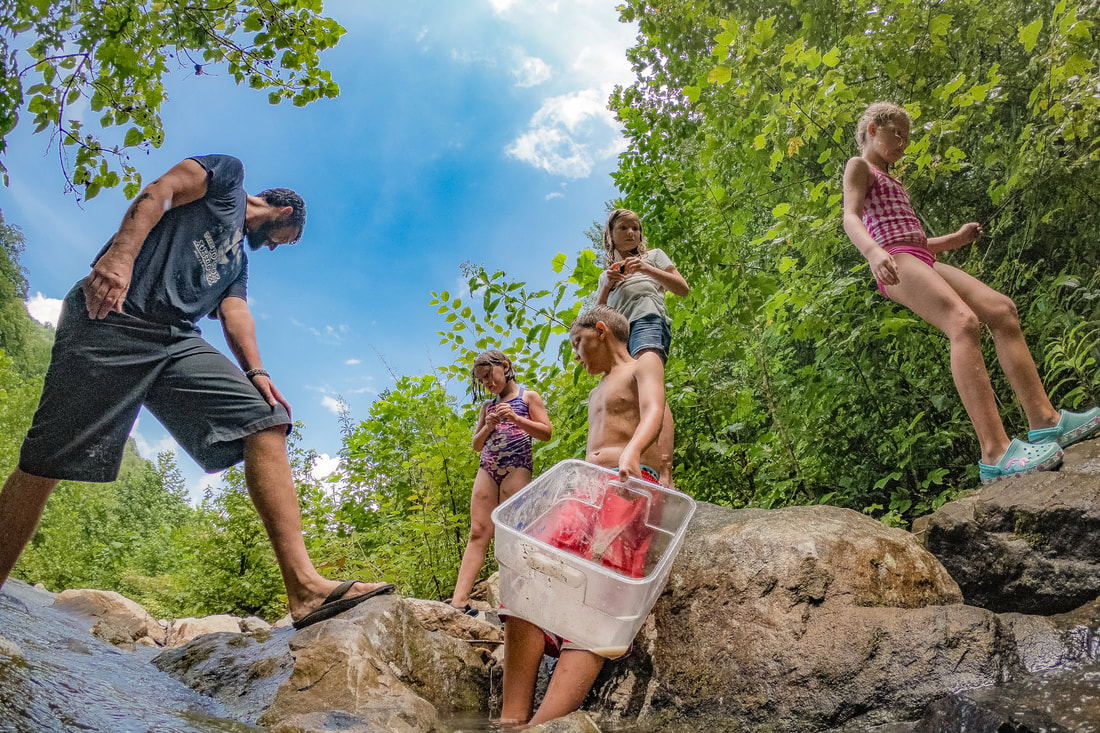What Is Montessori?
Education is a natural process carried out by the human individual, and is acquired not by listening to words but by experiences in the environment.
– Dr. Maria Montessori
Basic Tenets
Montessori education offers our children opportunities to develop their potential as they step out into the world as engaged, competent, responsible, and respectful citizens with an understanding and appreciation that learning is for life.
Each child is valued as a unique individual. Montessori education recognizes that children learn in different ways, and accommodates all learning styles. Students are also free to learn at their own pace, each advancing through the curriculum as he is ready, guided by the teacher and an individualized learning plan.
Beginning at an early age, Montessori students develop order, coordination, concentration, and independence. Classroom design, materials, and daily routines support the individual’s emerging “self-regulation” (ability to educate one’s self, and to think about what one is learning), toddlers through adolescents.
Students are part of a close, caring community. The multi-age classroom—typically spanning 3 years—re-creates a family structure. Older students enjoy stature as mentors and role models; younger children feel supported and gain confidence about the challenges ahead. Teachers model respect, loving kindness, and a belief in peaceful conflict resolution.
Montessori students enjoy freedom within limits. Working within parameters set by their teachers, students are active participants in deciding what their focus of learning will be. Montessorians understand that internal satisfaction drives the child’s curiosity and interest and results in joyous learning that is sustainable over a lifetime.
Students are supported in becoming active seekers of knowledge. Teachers provide environments where students have the freedom and the tools to pursue answers to their own questions.
Self-correction and self-assessment are an integral part of the Montessori classroom approach. As they mature, students learn to look critically at their work, and become adept at recognizing, correcting, and learning from their errors.
Each child is valued as a unique individual. Montessori education recognizes that children learn in different ways, and accommodates all learning styles. Students are also free to learn at their own pace, each advancing through the curriculum as he is ready, guided by the teacher and an individualized learning plan.
Beginning at an early age, Montessori students develop order, coordination, concentration, and independence. Classroom design, materials, and daily routines support the individual’s emerging “self-regulation” (ability to educate one’s self, and to think about what one is learning), toddlers through adolescents.
Students are part of a close, caring community. The multi-age classroom—typically spanning 3 years—re-creates a family structure. Older students enjoy stature as mentors and role models; younger children feel supported and gain confidence about the challenges ahead. Teachers model respect, loving kindness, and a belief in peaceful conflict resolution.
Montessori students enjoy freedom within limits. Working within parameters set by their teachers, students are active participants in deciding what their focus of learning will be. Montessorians understand that internal satisfaction drives the child’s curiosity and interest and results in joyous learning that is sustainable over a lifetime.
Students are supported in becoming active seekers of knowledge. Teachers provide environments where students have the freedom and the tools to pursue answers to their own questions.
Self-correction and self-assessment are an integral part of the Montessori classroom approach. As they mature, students learn to look critically at their work, and become adept at recognizing, correcting, and learning from their errors.
Montessori Learning Materials
A hallmark of Montessori education is its hands-on approach to learning. Students work with specially designed materials, manipulating and investigating until they master the lesson inside.
Beautifully crafted and begging to be touched, Montessori’s distinctive learning materials are displayed on open, easily accessible shelves. They are arranged (left to right, as we read in Western languages) in order of their sequence in the curriculum, from the simplest to the most complex.
Each material teaches a single skill or concept at a time—for example, the various “dressing frames” help toddlers learn to button, zip, and tie; 3-dimensional grammar symbols help elementary students analyze sentence structure and style. And, built into many of the materials is a mechanism (“control of error”) for providing the student with some way of assessing her progress and correcting her mistakes, independent of the teacher.
The concrete materials provide passages to abstraction, and introduce concepts that become increasingly complex. As students progress, the teacher replaces some materials with others, ensuring that the level of challenge continues to meets their needs.
Beautifully crafted and begging to be touched, Montessori’s distinctive learning materials are displayed on open, easily accessible shelves. They are arranged (left to right, as we read in Western languages) in order of their sequence in the curriculum, from the simplest to the most complex.
Each material teaches a single skill or concept at a time—for example, the various “dressing frames” help toddlers learn to button, zip, and tie; 3-dimensional grammar symbols help elementary students analyze sentence structure and style. And, built into many of the materials is a mechanism (“control of error”) for providing the student with some way of assessing her progress and correcting her mistakes, independent of the teacher.
The concrete materials provide passages to abstraction, and introduce concepts that become increasingly complex. As students progress, the teacher replaces some materials with others, ensuring that the level of challenge continues to meets their needs.
The Teacher as “Guide”
The Montessori teacher, child, and environment may be seen as a learning triangle, with each element inextricably linked, and a vital part of the whole. The teacher thoughtfully%
Multi-Age Groupings
A Montessori class is composed of students whose ages typically span 3 years. Ideally, members stay with the class, and teacher, for the entire cycle, forging a stable community and meaningful bonds.
It is common to see students of different ages working together. Older students enjoy mentoring their younger classmates—sometimes the best teacher is someone who has recently mastered the task at hand. Younger students look up to their big “brothers” and “sisters,” and get a preview of the alluring work to come.
It is common to see students of different ages working together. Older students enjoy mentoring their younger classmates—sometimes the best teacher is someone who has recently mastered the task at hand. Younger students look up to their big “brothers” and “sisters,” and get a preview of the alluring work to come.


